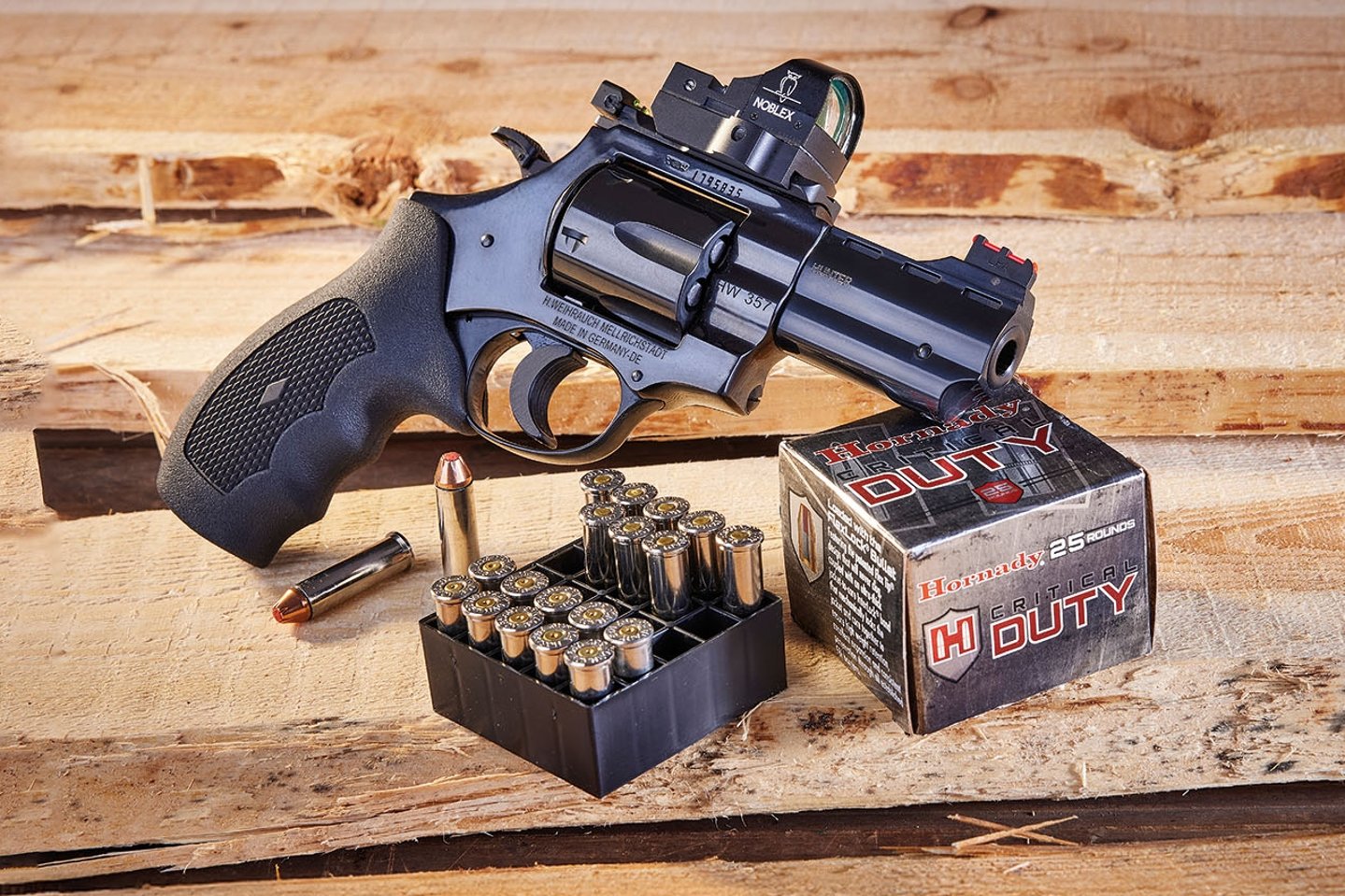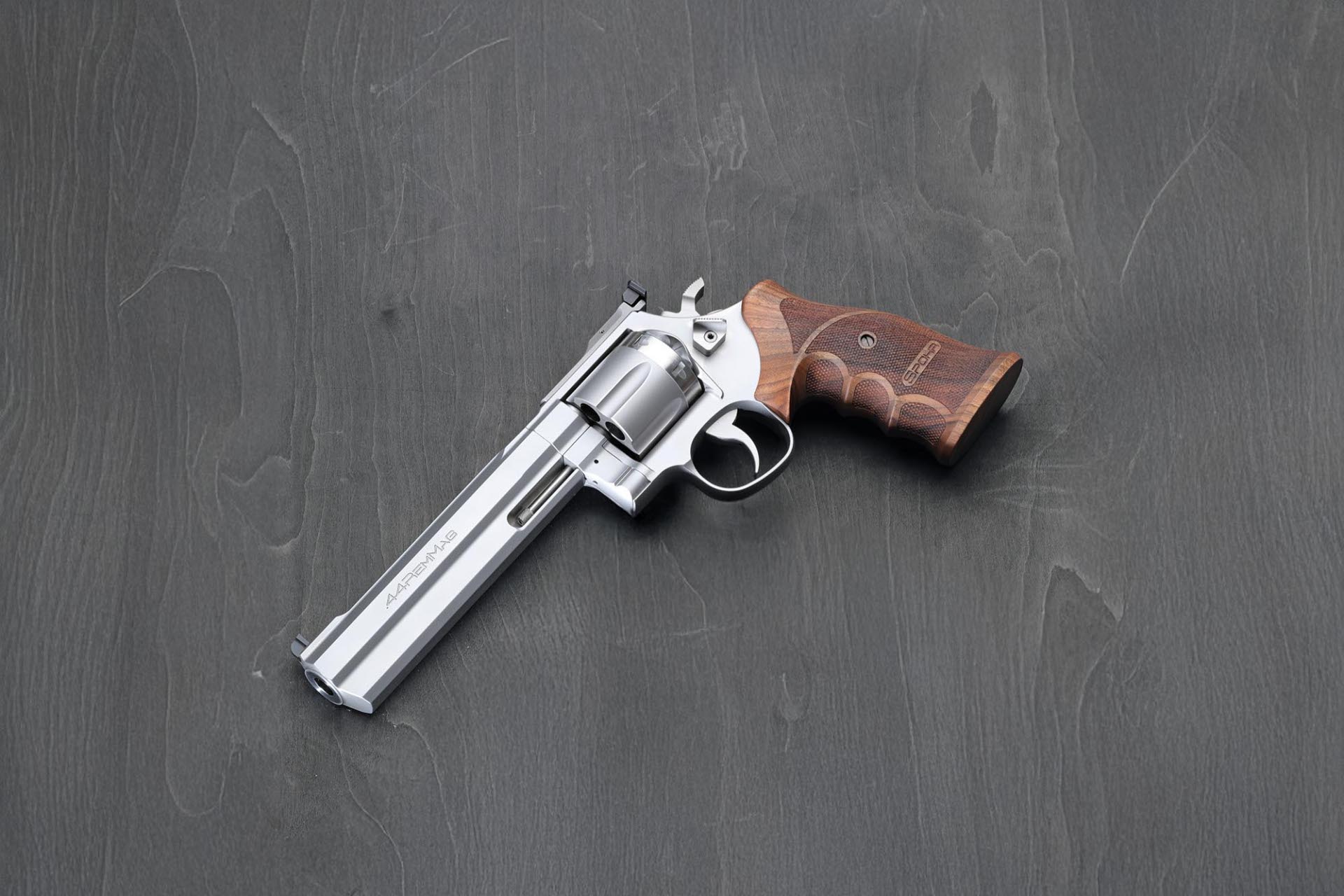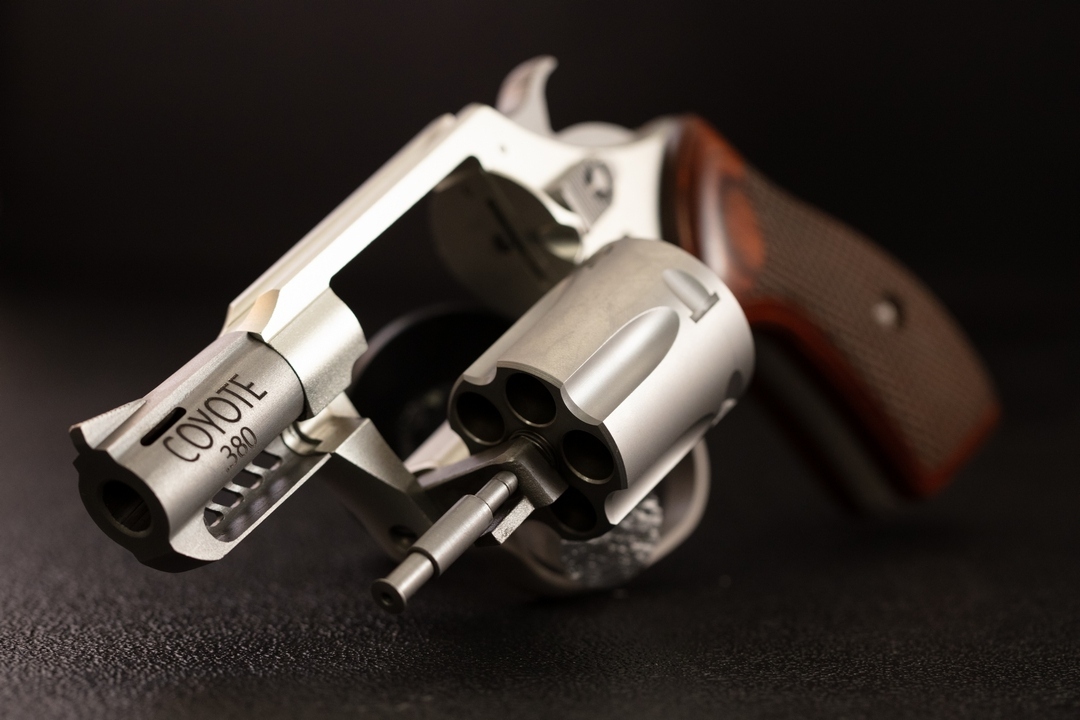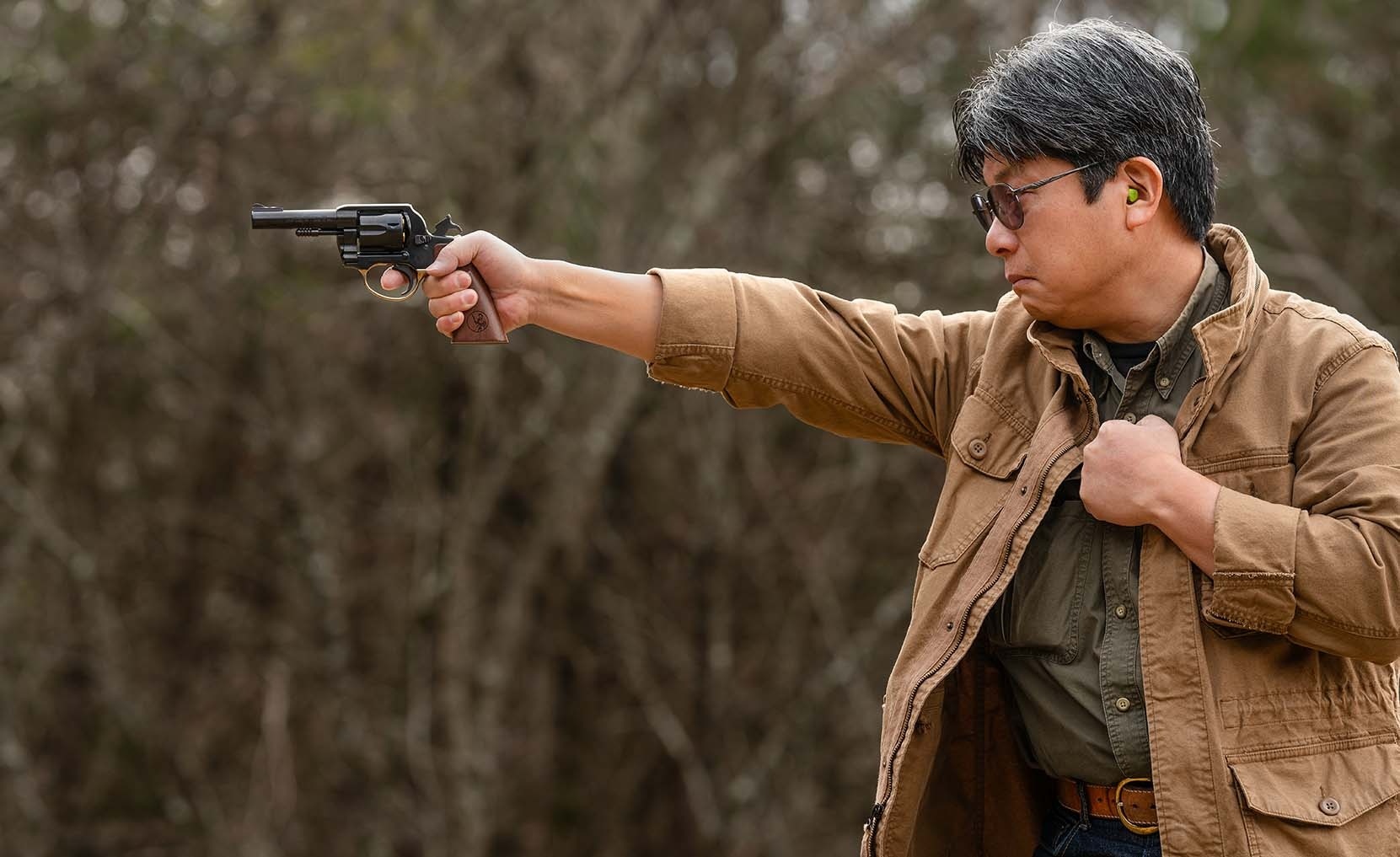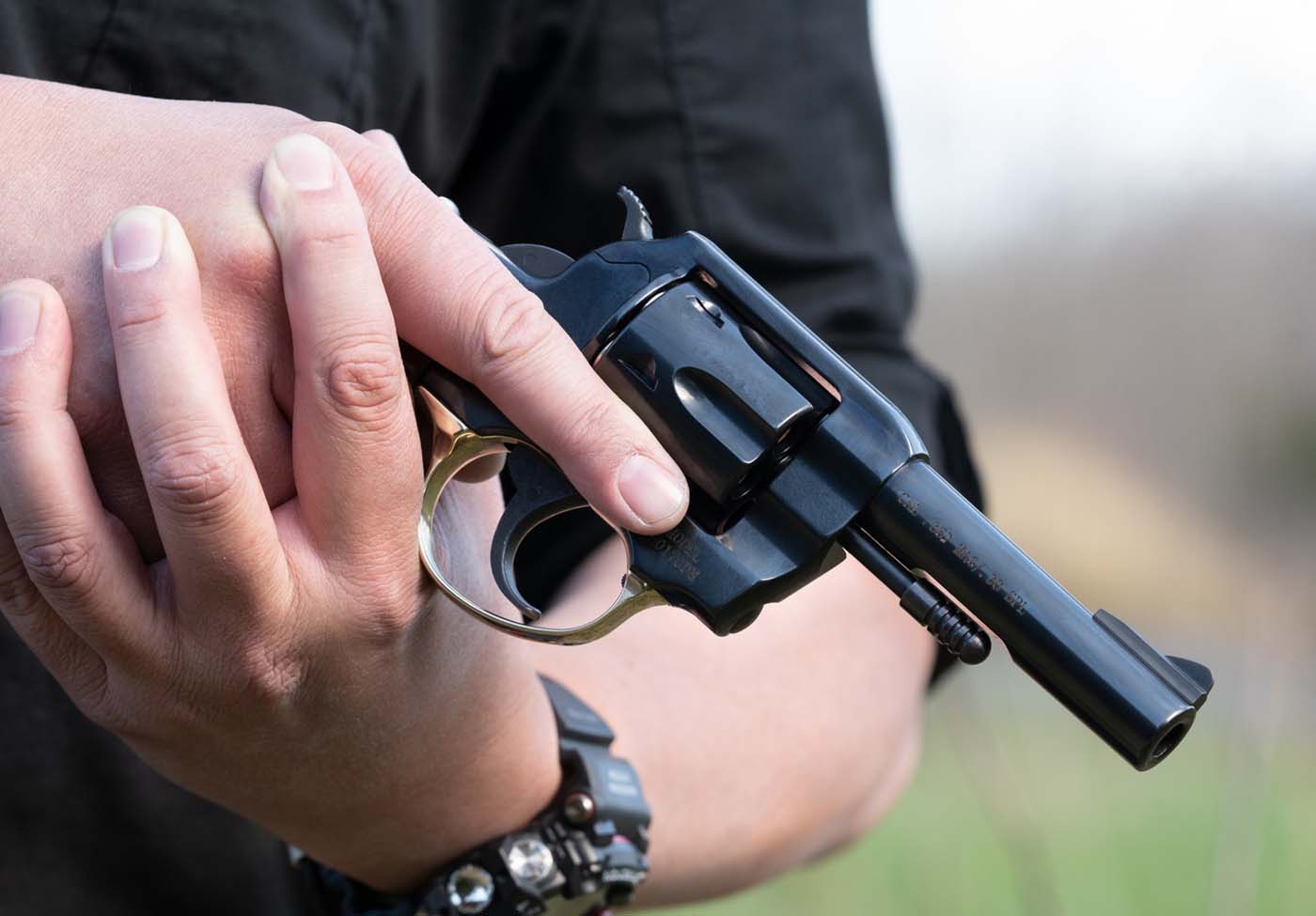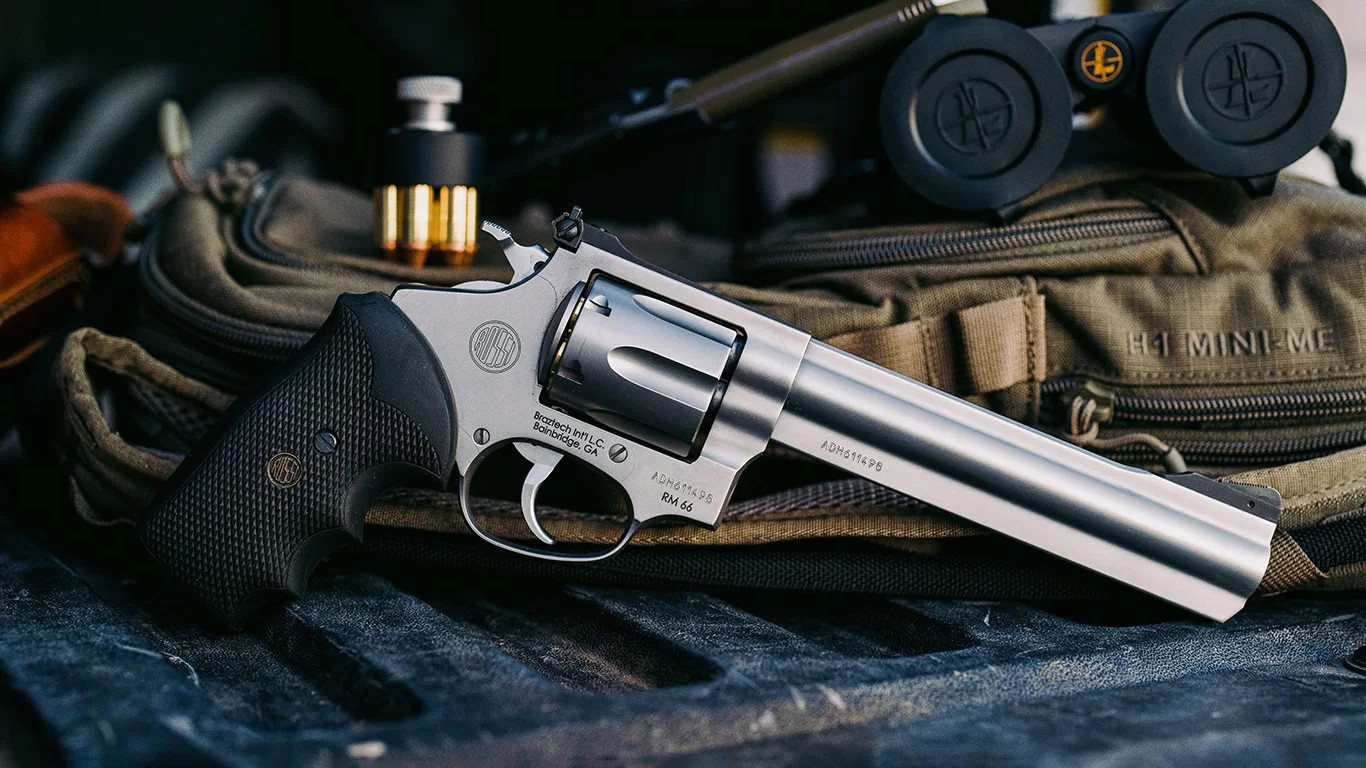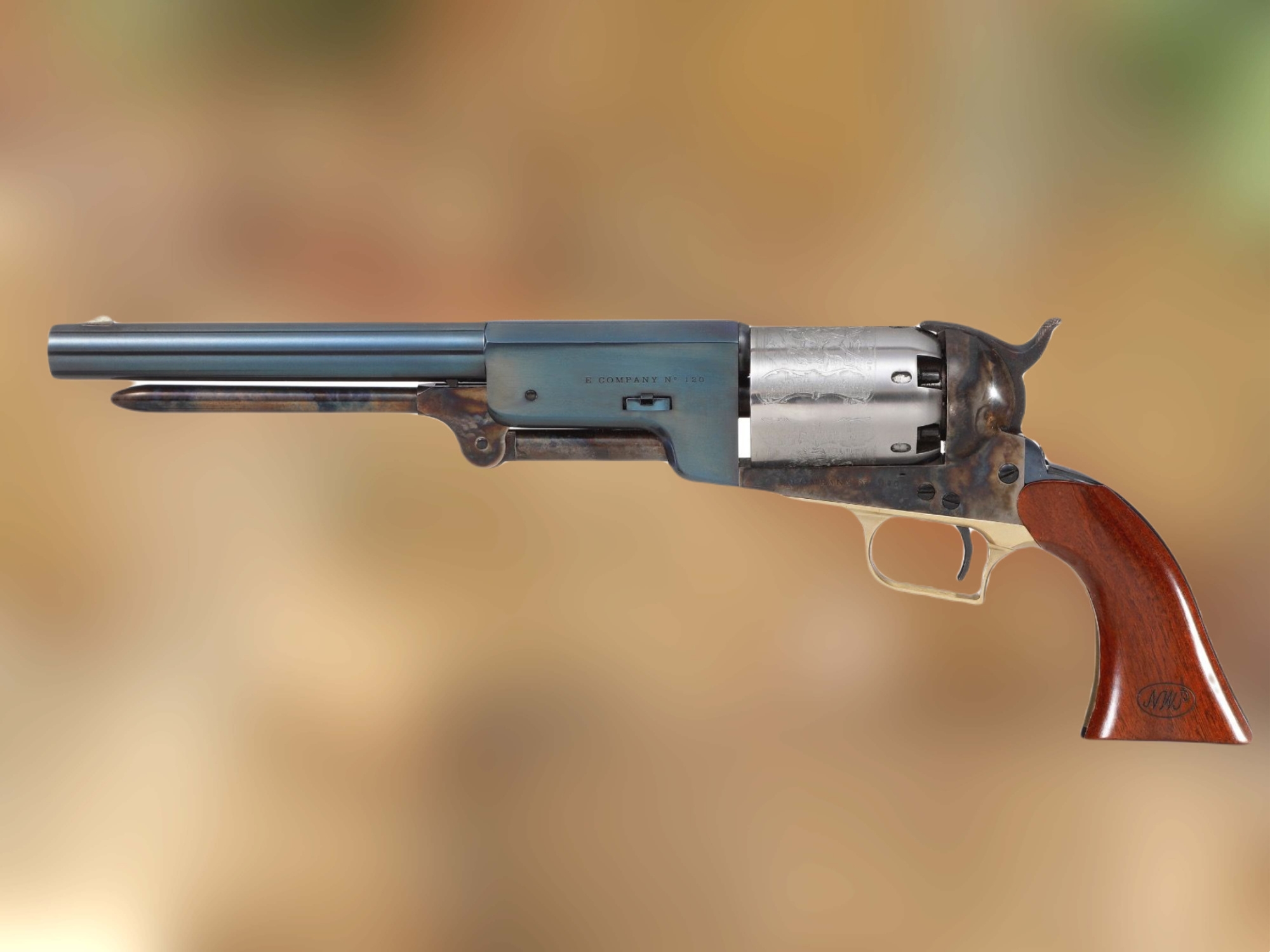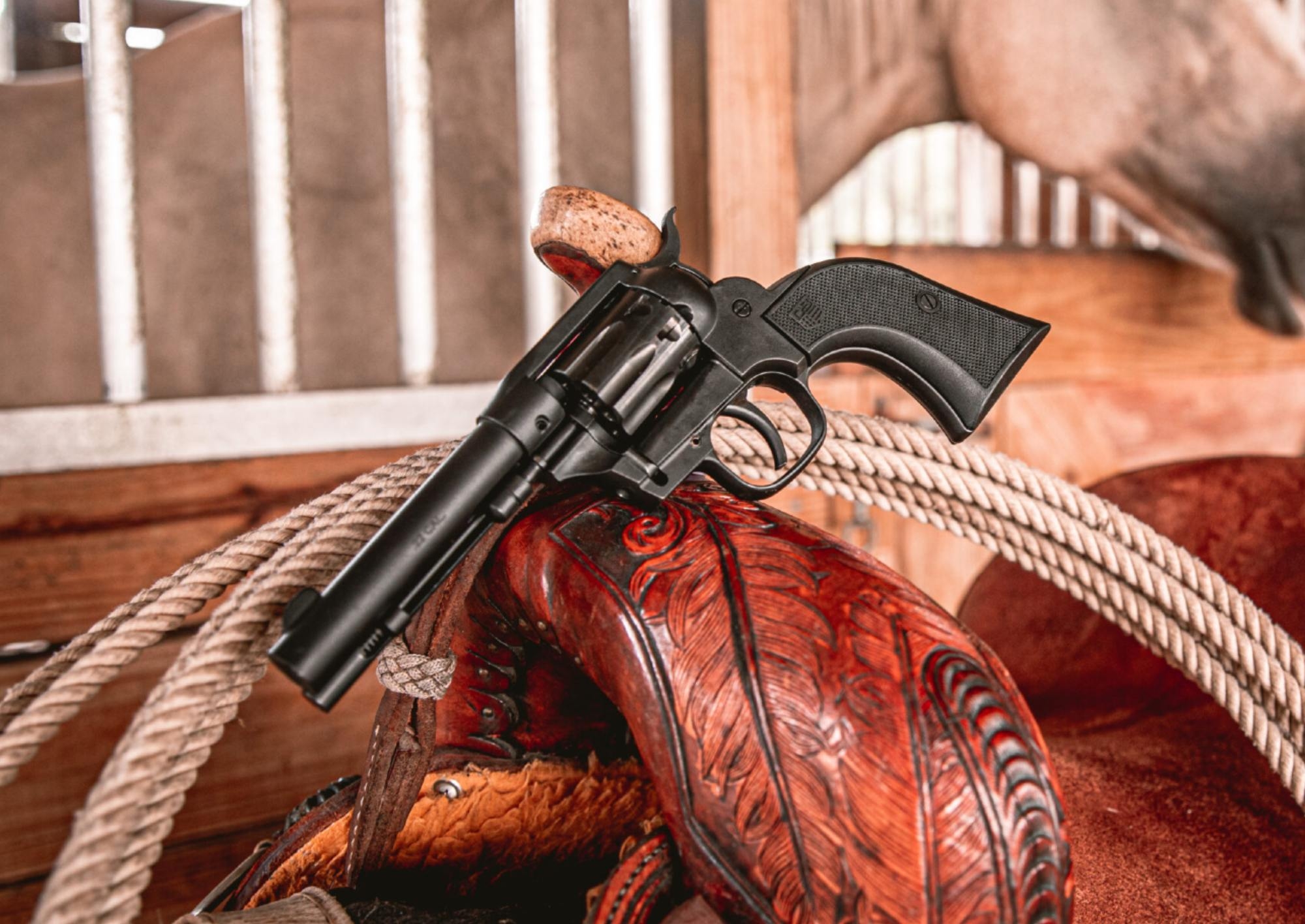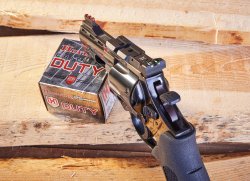
Even the first impression of the "Horrido" was convincing. With its 3"/76 mm barrel, it is compact and chambered for the powerful, very common .357 Magnum cartridge. If you want something a little less powerful, you can shoot the weaker .38 Special cartridges. The Horrido comes with open sights with fiber optic inserts – an option under changing or poor light conditions at dusk: the shooter can probably always concentrate better on the red dot between two green dots than on a grey-black mass whose light gaps between the rear sight cut-out and the front sight are blurred. Although white paint dots are a help, they are a thing of the past compared to fiber optic inserts. However, the high-quality LPA sights offer yet another option that allows shooting in the dark: a red dot sight with a Picatinny mount can be fitted in a transverse rail in the rear sight leaf. The only limiting factor is the Picatinny plate for the red dot sight. This enables the shooter to shoot accurately even in the dark.
Arminius HW 357 Horrido revolver – The most important details about the special model from Alljagd
The reasonably priced Arminius HW 357 revolver from Weihrauch has been on the market for some time as the "Hunter", but without LPA sights and with a front sight without the red fiber optic insert. This new equipment variant is offered in a blued version like the revolver we tested here, but also in a stainless steel finish. This costs a manageable 63 euros more. The revolver, which is only available from specialist all-hunting shops, can also be ordered with a red dot sight. Either with a Nikko Stirling, in which case the blued test revolver would cost €999, or with the Noblex sight shown here, in which case the gun would cost €1,098.
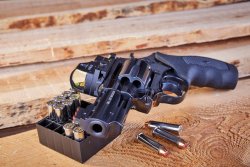
Both revolver models are otherwise configured in the same way. A practical rubber grip surrounds a rather rudimentary-looking frame. A coil spring is mounted in this frame, which provides the hammer's striking force. Unlike most revolver brands, the cylinder of the HW 357 Horrido rotates clockwise, i.e. "Colt-style". And as with Colt revolvers, the small locking lug in the ejector rod of the cylinder axis is missing. Instead, there are still the alignment pins for the ejector rod, which have long since been rationalised away by many other manufacturers. The generous widths of the trigger blade and hammer spur are provided by screwed-on or pinned extensions. It remains to be seen whether the ventilated barrel rib will be needed for a revolver configured for hunting or defence purposes. But all in all, it is not detrimental to the pleasing contours and harmonious appearance. The Horrido scored well when checking the cylinder gap with a width of around 15 hundredths of a millimeter. There is also nothing to complain about when using the almost caliber-sized cylinder gauge, which is ground from .357.5" to .357.0". The lightly oiled gauge can be inserted in all chambers without blocking or noticeably higher friction – great!
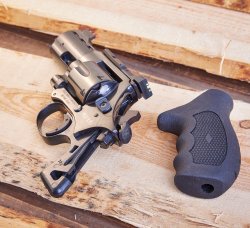
With the Weihrauch Arminius HW 357 Horridorevolver on the shooting range
The HW 357 Horrido is neither barrel- or grip-heavy. The rubber grip provides enough contact surface for medium-sized hands. The hammer spur with its wide and sharply serrated contact surface is easy to reach for cocking. When cocked, the hammer drops out of the notch without any creep. The very good trigger characteristics in conjunction with the fairly wide contact surface on the trigger blade contribute significantly to the fact that the relatively high measured trigger pull weight subjectively feels significantly lower than an SA trigger pull of 2,200 grams. As the grip stub cannot be clamped and the operating distance for very short-barrelled guns is generally limited to 10 metres, the Horrido was shot from the Heymann Guntester.
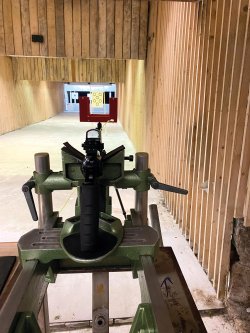
Using red dot sights, five-shot groupings of less than 50 millimetres can be consistently achieved. Thanks to the mirror-like chambers, the cases came out almost without resistance despite the rather short ejector stroke. Differences between .357 and .38 cases could not be determined. Depending on the loading, it was even sufficient to point the muzzle towards the sky to allow the cases to fall out. This exercise showed that the expensive nickel coating of some manufacturers, such as Hornady or Magtech, is definitely justified. The differences between .38 Special and .357 Magnum in terms of recoil and muzzle flash are considerable, as with all short-barrelled handguns. With short-barrelled revolvers, it is not only the amount of propellant that burns off in front of the muzzle, but also the amount of flash from the cylinder gap. The rule of thumb for suitable, preferably flash-free loadings for "snub noses" still includes the lighter bullets and fast rather than progressive propellants.
On the slightly darkened shooting range, the testers experienced the flash effect of the .38 Special cartridges. There was little flash with the Hornady "Lite" load, but this did not even reach the limit of 200 joules. More power, but also more flash, always came with the package. The tested heavy 158-gr GECO bullet is designed more for long-barrelled revolvers, and it did not deform and passed through the Clear Ballistics block. The three tested loads in .357 Magnum produced significantly more flash and bang and a correspondingly heavier push in the hand. The lighter bullets (125 grs and 135 grs) delivered almost homogeneous penetration depths with almost the same bullet expansion. The Magtech cartridge featuring a simple 158-grain hollow point bullet, i.e. without a pre-fragmented jacket, did not expand and passed through the Clear Ballistics block without any increase in diameter. Perhaps only 10 to 15 m/s more muzzle velocity would have been enough to give the starting impulse to expand, but it did not work here. There were no malfunctions or anomalies with the gun during the entire test.
Arminius HW 357 Horrido technical specifications and price
Model: | Weihrauch Arminius HW 357 Horrido - Alljagd Edition |
Caliber: | .357 Magnum |
Capacity: | 6 rounds |
Barrel Length: | 3"/76 mm |
Sight Radius: | 110 mm |
Rear Sight Notch: | 3.0 mm |
Front Sight Width: | 3.0 mm |
Trigger Pull Weight: | 2,200 g |
Weight: | 915 g |
| Dimensions (LxWxH): | 195x38x153 mm |
| Prices: | 618 euro blued; 681 euro stainless steel finish |
| Equipment: | LPA-WXT adjustable rear sight with green fiber optic inserts and Picatinny rail, LPA front sight with red fiber optic insert, rear sight adjustment key, black rubber grip, ventilated barrel rib. |
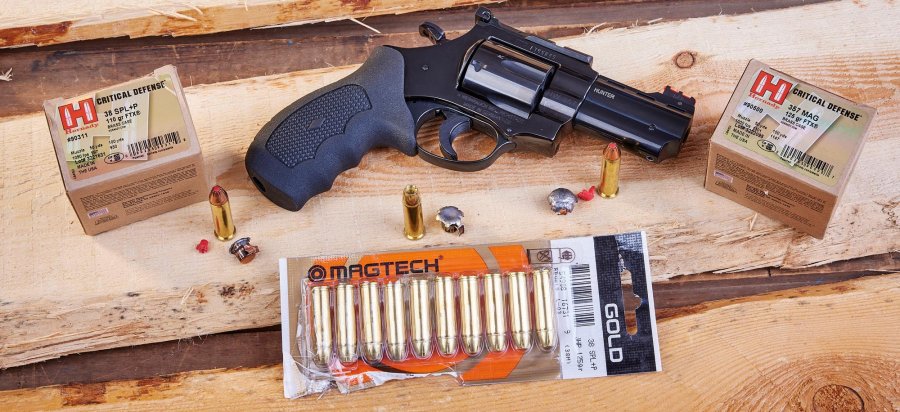
Conclusion: Arminius HW 357 Horrido revolver, sold exclusively by Alljagd
The Weihrauch Arminius HW 357 Horrido is a prime example of the saying "less is sometimes more". The simple but proven concept of the revolver has remained the same. Thanks to the optic upgrade of the open sights and in particular the red dot option, Alljagd has picked up on the increasingly emerging trend of upgrading handguns with red dot sights. The complete packages with this price-performance ratio deserve an outright recommendation to buy.
The Weihrauch Arminius HW 357 Horrido is available exclusively on the Alljagd website. (German language only.)


